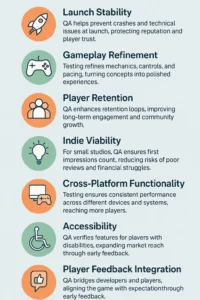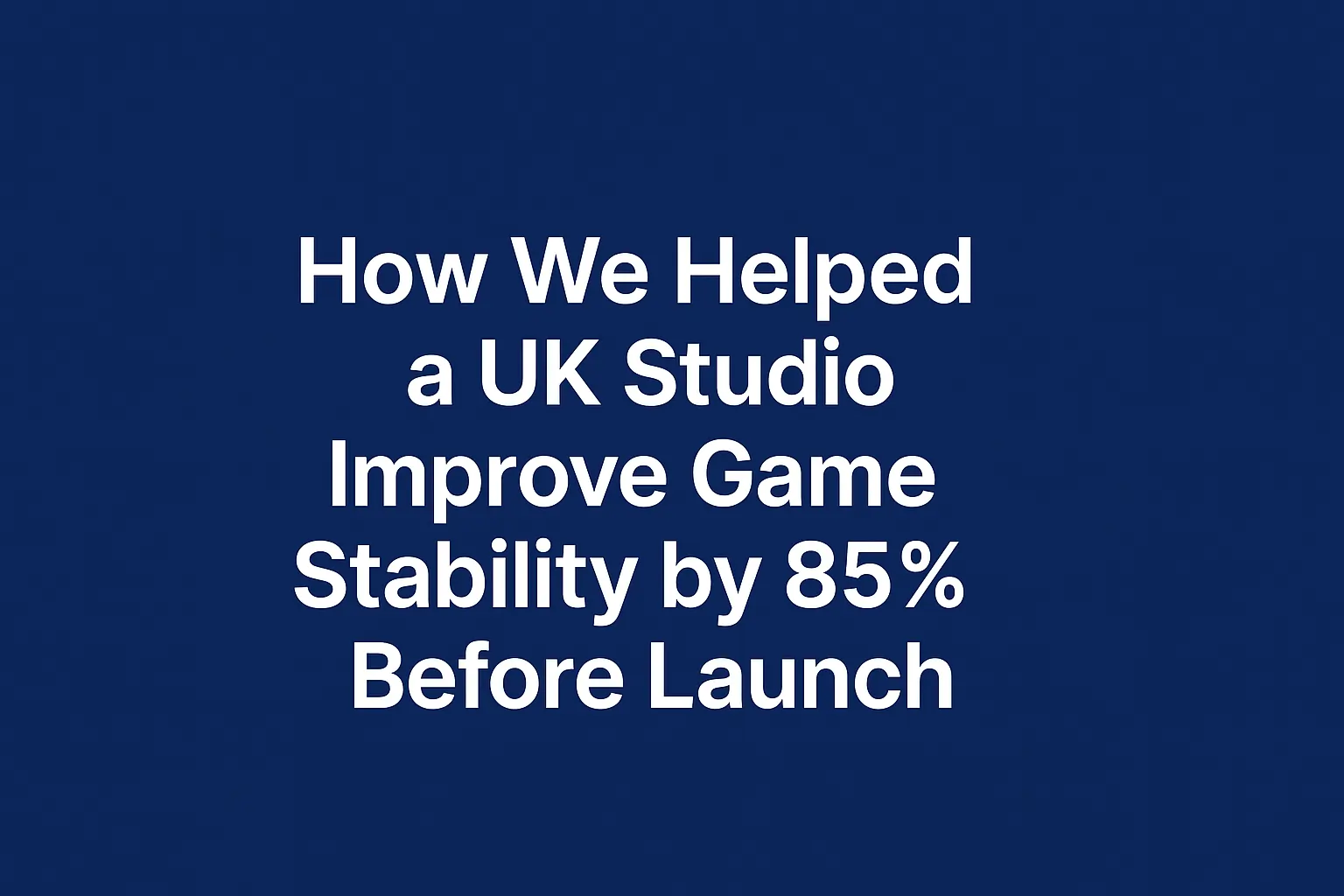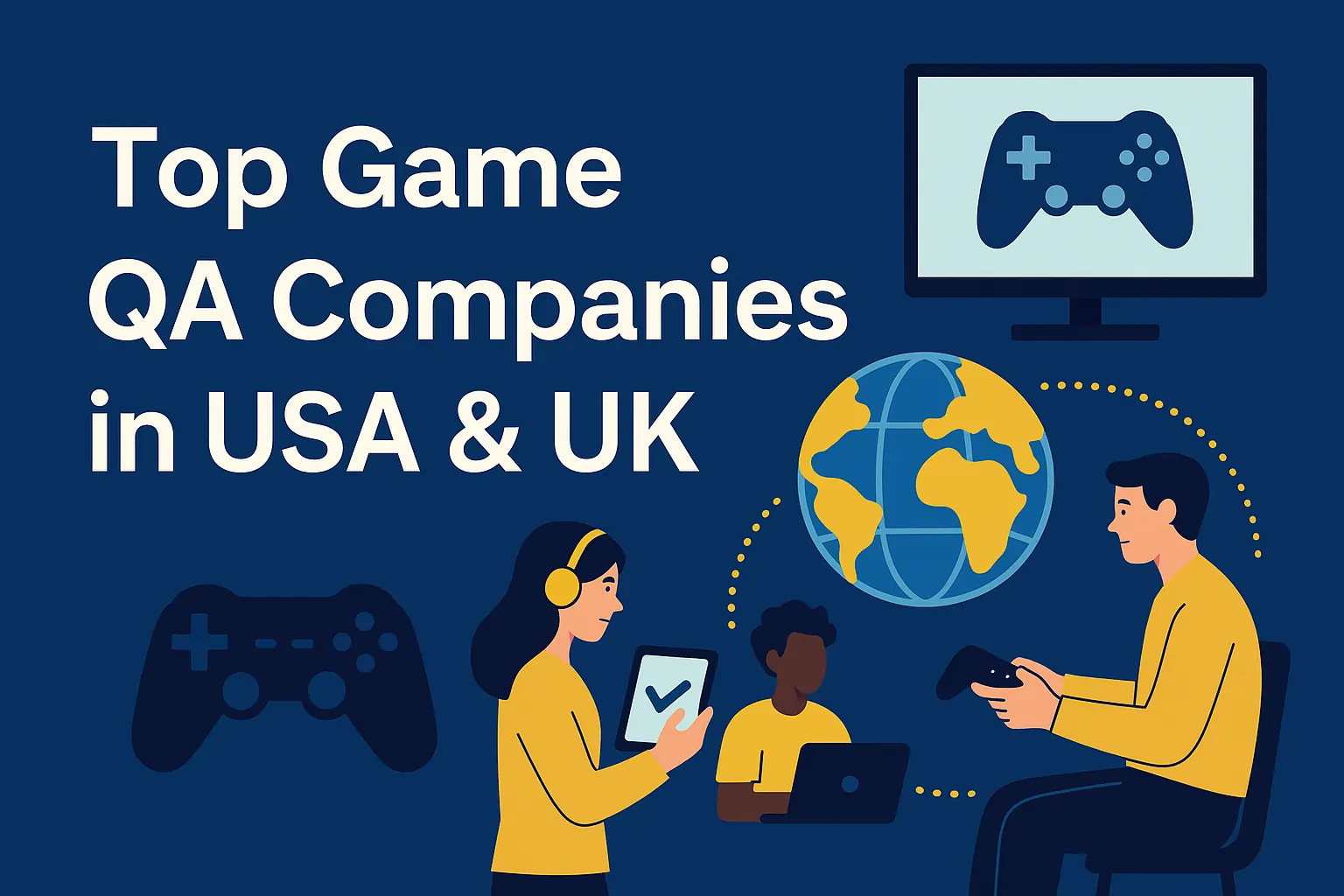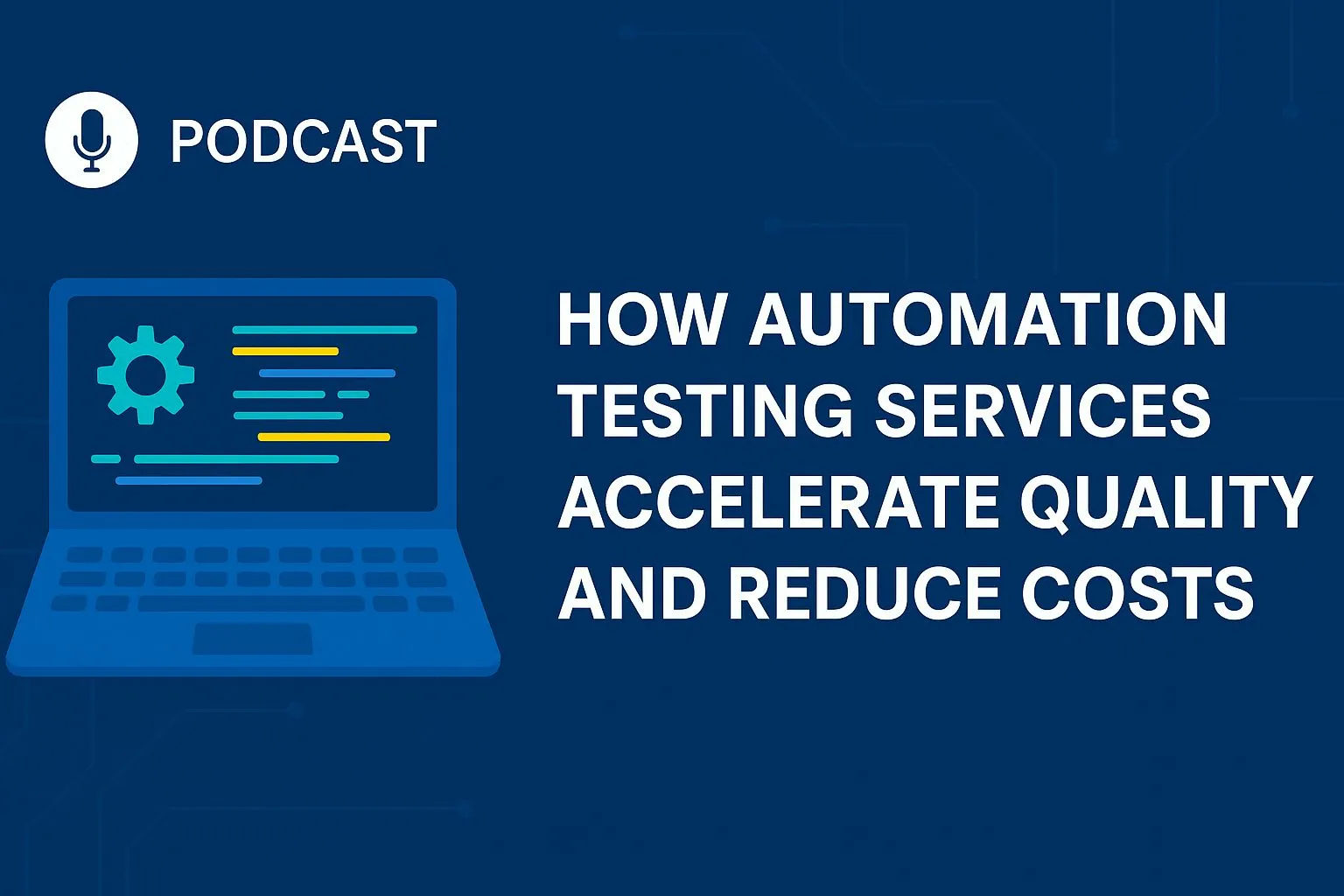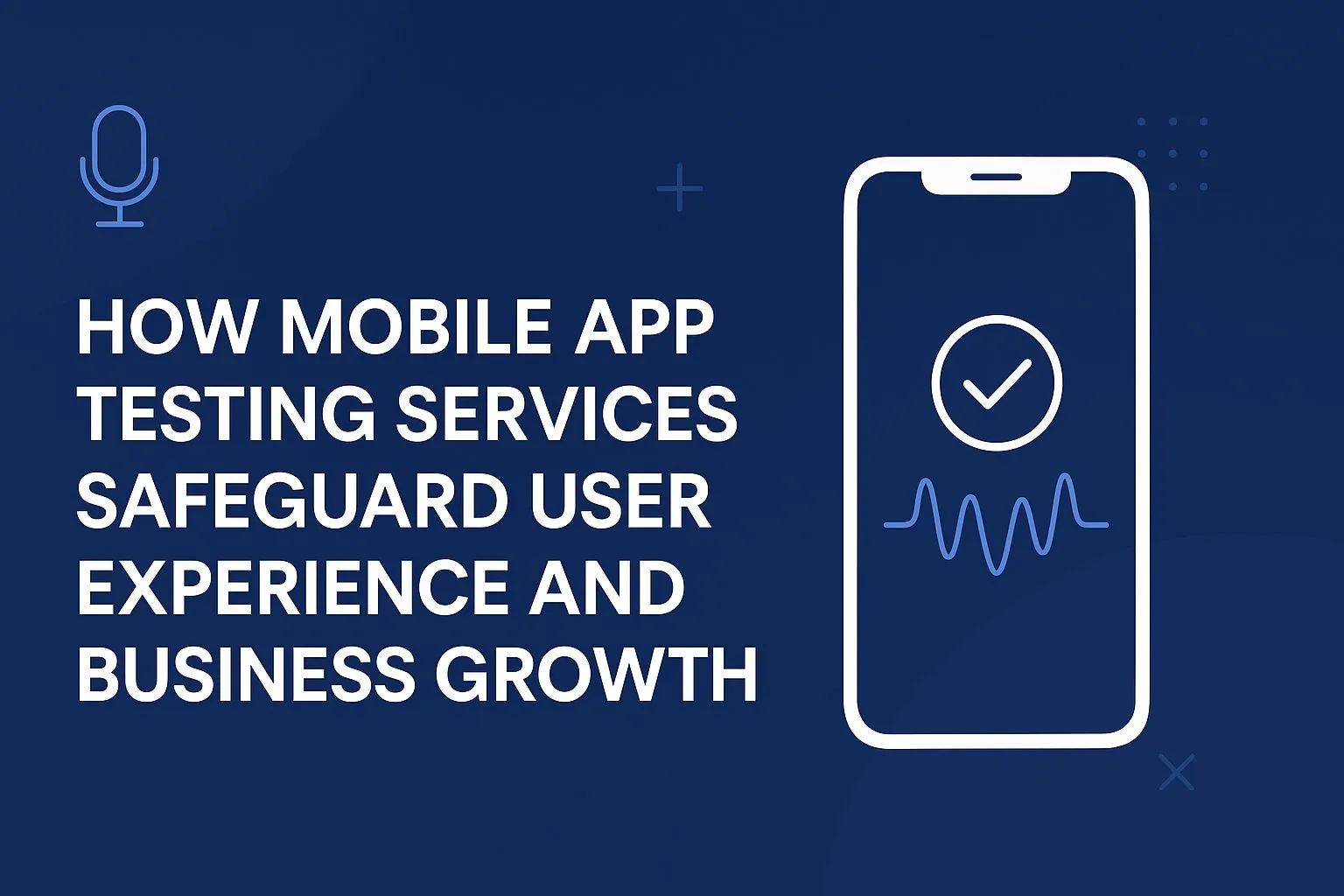How Game Testing Services Can Boost Your Game’s Success in a Competitive Market
The gaming industry has never been more crowded or more unforgiving. Each week, hundreds of titles appear on digital storefronts across PC, console, and mobile platforms. Only a handful capture long-term attention, while many fade into obscurity within weeks. Marketing helps create initial buzz, but quality determines whether players stay.
Players are more connected than ever before. A single broken update or poorly optimized release can trigger a flood of negative reviews and refund requests within hours. In this environment, game testing services have become not just helpful, but essential. They safeguard launch stability, refine gameplay, and ensure inclusivity, transforming a risky release into a sustainable success.
Launch Stability: Protecting Day-One Reputation
Day-one impressions are powerful. If a game crashes, loses progress, or struggles with online servers, trust evaporates instantly. Even well-known studios have stumbled when technical problems overshadowed creative vision.
Professional QA testing prevents these disasters by simulating real-world conditions. Testers validate installation flows, stress test servers, and confirm that progress saves correctly. They also verify patch deployment to ensure updates don’t introduce new failures. By doing this before launch, developers protect their reputation and avoid headlines about broken releases.
👉 Want to secure your launch day?
From Ideas to Experiences: Refining Mechanics
Game design begins with vision, but execution makes or breaks it. An innovative puzzle mechanic or engaging combat system can fall flat if controls feel unresponsive or tutorials confuse players.
Through usability and playability testing, QA transforms ideas into enjoyable experiences. Testers evaluate:
- Control responsiveness across devices.
- Tutorial clarity for both new and experienced players.
- Progression pacing to balance challenge and reward.
By resolving these issues, developers create games that feel intuitive instead of frustrating. This refinement often determines whether players leave positive reviews or abandon the game early.
Retention Loops: Building Loyalty Beyond Launch
Modern games thrive on retention. Free-to-play titles, live-service models, and multiplayer experiences all depend on players returning regularly. However, unbalanced reward systems or repetitive content can undermine long-term engagement.
Game QA services address retention by running extended play sessions. Testers simulate both casual and hardcore playstyles, providing feedback on grind, progression, and balance. Developers can then fine-tune difficulty curves, diversify content, and improve reward systems.
Well-tested retention loops encourage players to return, form communities, and invest time—and often money—into the game.
Indie vs AAA: Different Scales, Same Stakes
QA priorities differ between small studios and global publishers.
- Indie developers: With limited budgets, one poor release can end a studio’s journey. QA ensures survival by preventing avoidable bugs that could bury a promising title under negative reviews.
- AAA studios: These teams handle massive open worlds, multiplayer servers, and millions of simultaneous players. Here, QA focuses on scalability, cross-platform consistency, and balancing huge volumes of content.
Although the stakes vary in scale, the principle is identical: without structured testing, both indie and AAA games risk failure.
👉 Need QA tailored to your studio?
Crossing Platforms: Meeting Players Everywhere
Today’s players expect games to perform across platforms from high-end PCs to handheld devices. Delivering a consistent experience across hardware is challenging, especially with different graphics settings, input methods, and operating systems.
Cross-platform QA addresses this by:
- Testing visual consistency across resolutions.
- Validating input for controllers, keyboards, and touchscreens.
- Checking performance on both low-end and high-end hardware.
A game that performs well across ecosystems attracts a larger audience and reduces complaints from neglected platforms.
Accessibility: Expanding Markets Through Inclusivity
Accessibility is no longer a bonus it’s a standard expectation. Players with disabilities form a significant portion of the gaming community. Ignoring their needs risks alienating not only them but also allies who value inclusivity.
Accessibility testing ensures features such as:
- Subtitles and accurate captions.
- Colorblind-friendly UI options.
- Customizable controls for mobility challenges.
- Adjustable difficulty levels for cognitive flexibility.
Inclusive design doesn’t just meet ethical goals. It broadens market reach and builds goodwill, making accessibility a competitive advantage.
👉 Want to future-proof your game?
QA as a Feedback Bridge
Testing isn’t just about catching errors, it’s also about simulating how different types of players will interact with the game. Casual testers may highlight unclear instructions, while competitive players focus on balance.
This feedback loop allows developers to adjust design decisions before launch. By aligning mechanics with player expectations early, QA ensures the final release resonates with its intended audience.
Mini Case Scenario: Avoiding Disaster on Early Access
Imagine a small studio preparing to launch a cooperative survival game in Early Access. Excitement builds, but during QA, testers discover that progress data corrupts after two hours of play. Left unfixed, this flaw would have triggered mass refunds, negative Steam reviews, and a collapsing player base.
Because the issue was caught in testing, developers fixed it pre-launch. The game went live with stable saves, and reviews praised its reliability. What could have been a disaster became a stepping stone toward community growth.
This fictional case mirrors countless real-world scenarios, proof that QA protects opportunities for success.
Confidence at Launch and Beyond
Releasing a game without proper QA is a gamble. Developers may focus on marketing campaigns, but players will quickly see through flaws. Thorough game testing services shift launches from risky bets to confident milestones.
By validating systems before release, developers can focus on building communities, engaging influencers, and planning future updates, rather than patching last-minute crises.
👉 Want to launch with confidence?
Conclusion: QA as Growth Insurance
Game testing is more than a checklist. It’s an insurance policy for market success. From protecting day-one reputation to refining mechanics, strengthening retention, and ensuring accessibility, game QA services increase the odds of standing out in a crowded market.
For both indie teams and AAA giants, structured testing is the bridge between creative vision and commercial viability. In gaming, quality is the ultimate marketing tool and QA ensures it shines through.
Frequently Asked Questions (FAQ)
Q1. How does QA improve a game’s reputation?
By ensuring stability and polish at launch, QA builds trust among players, leading to better reviews and stronger brand loyalty.
Q2. What’s the difference between QA for indie and AAA games?
Indies focus on survival and first impressions, while AAA studios prioritize scalability, multiplayer stability, and massive content balancing.
Q3. How does QA impact player retention?
Testing helps refine progression systems, reward loops, and balance, ensuring players remain engaged for longer periods.
Q4. Why is accessibility testing important?
It makes games inclusive for players with disabilities, broadens the audience, and strengthens the developer’s reputation.
Q5. Can QA reduce post-launch costs?
Yes. Fixing issues during testing is far cheaper than issuing emergency patches after negative reviews.
Q6. How early should testing start?
QA should begin as soon as a playable build exists, catching critical issues before they become expensive to fix.
Q7. Does cross-platform testing really influence sales?
Absolutely. Games that run consistently across devices attract more players and avoid losing communities due to poor optimization.


